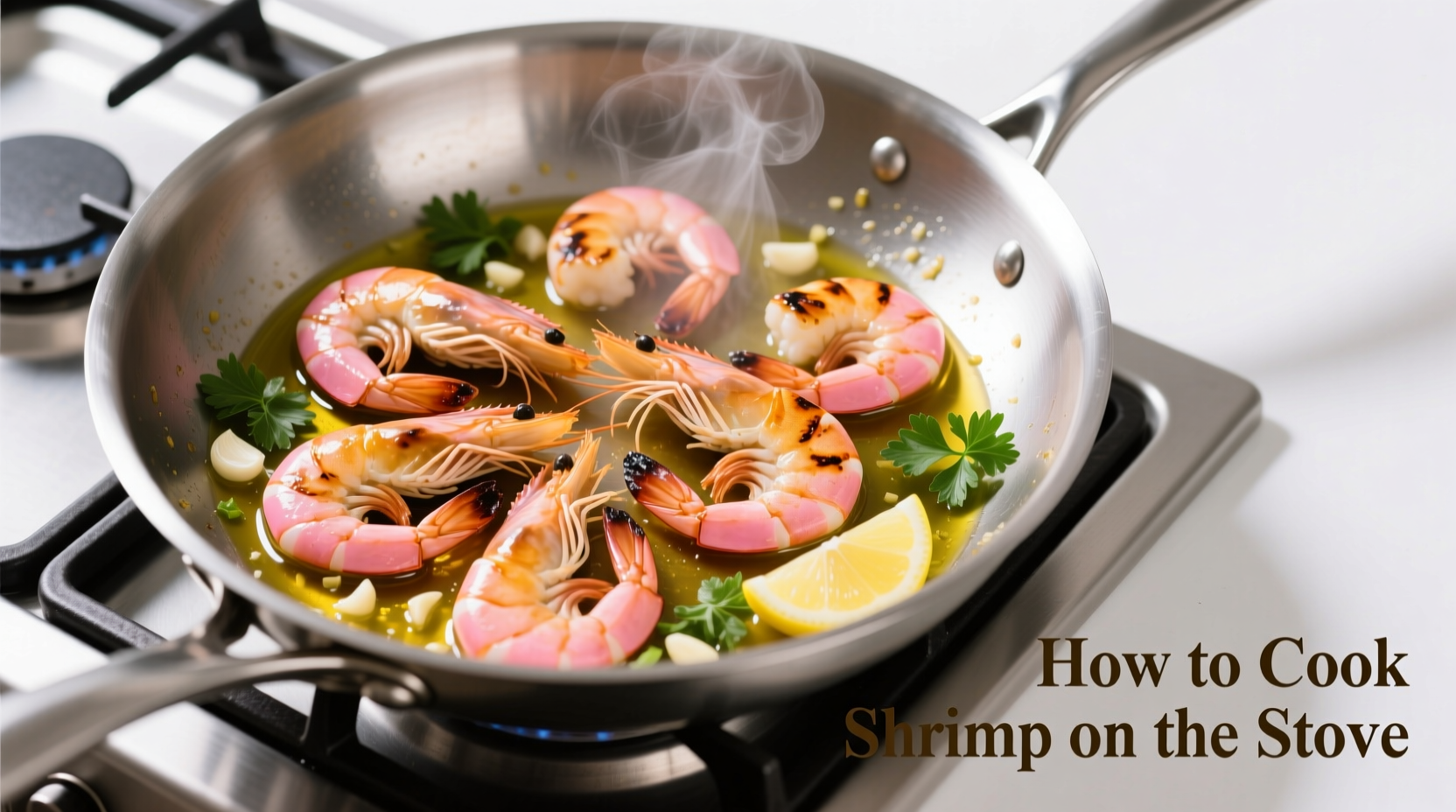Cooking shrimp on the stove is one of the fastest and most reliable methods for achieving perfectly seared, juicy results. Whether you're using fresh or frozen shrimp, the key to success lies in proper preparation, precise timing, and understanding the visual cues that indicate doneness. This comprehensive guide reveals the exact techniques that transform ordinary shrimp into an impressive meal with minimal effort.
Why Stove Cooking Works Best for Shrimp
Unlike baking or boiling, stovetop cooking gives you complete control over the searing process. The direct heat creates that desirable golden-brown crust while keeping the interior tender. According to culinary research from America's Test Kitchen, shrimp cooked on the stove develop superior texture compared to other methods because you can precisely monitor the critical transition from translucent to opaque.
Essential Preparation Steps
Proper preparation makes the difference between soggy and spectacular shrimp:
- Thawing (if frozen): Place frozen shrimp in a colander under cold running water for 10-15 minutes. Never thaw at room temperature.
- Drying: Pat shrimp thoroughly with paper towels - this crucial step prevents steaming and ensures proper searing.
- Deveining: Use a paring knife to make a shallow cut along the back and remove the digestive tract.
- Temperature: Let shrimp sit at room temperature for 15 minutes before cooking for even results.
| Shrimp Size | Count per Pound | Recommended Cooking Time |
|---|---|---|
| Salad | 60-70 | 1-1.5 minutes per side |
| Medium | 41-50 | 1.5-2 minutes per side |
| Large | 31-40 | 2-2.5 minutes per side |
| Jumbo | 21-25 | 2.5-3 minutes per side |
Perfect Stovetop Cooking Technique

Equipment Setup
Use a stainless steel or cast iron skillet for optimal browning. Heat 1-2 tablespoons of high smoke-point oil (avocado, grapeseed, or light olive oil) over medium-high heat until shimmering but not smoking. The oil should flow easily like water when tilted.
Cooking Process
- Arrange shrimp in a single layer without crowding (work in batches if necessary)
- Cook undisturbed for the first half of the recommended time
- Flip shrimp when edges turn pink and opaque halfway up the side
- Cook until flesh turns completely opaque with a slight C-shape curl
- Immediately transfer to a plate to prevent carryover cooking
Critical Doneness Indicators
Don't rely solely on timing - visual cues are essential:
- Color change: Translucent gray to opaque pink/orange
- Texture: Firm but still slightly springy to touch
- Shape: Forms a loose "C" shape (tight "O" means overcooked)
- Internal temperature: 145°F (63°C) as measured by USDA Food Safety and Inspection Service standards
Common Mistakes to Avoid
Understanding these pitfalls will dramatically improve your results:
- Wet shrimp: Inadequate drying causes steaming instead of searing
- Overcrowded pan: Lowers temperature and creates excess moisture
- Incorrect heat: Too low = no sear; too high = burnt exterior, raw interior
- Overcooking: Shrimp continues cooking after removal from heat
- Early flipping: Disturbing before proper sear formation causes sticking
Flavor Enhancement Options
Add these during the last minute of cooking for maximum flavor impact:
- Garlic and lemon slices
- Red pepper flakes for subtle heat
- White wine for deglazing
- Butter and fresh herbs for finishing
When Stove Cooking Isn't Ideal
While stove cooking works perfectly for most shrimp preparations, certain scenarios call for alternative methods:
- Large quantities: For parties, consider baking on sheet pans
- Delicate preparations: Poaching works better for shrimp cocktails
- Smaller shrimp: Tiny shrimp cook too quickly on stove for precise control
- Specialty dishes: Shrimp scampi benefits from the sauce integration of stove cooking, while shrimp tacos might work better grilled
Troubleshooting Guide
Solve common issues with these professional techniques:
- Rubbery texture: Result of overcooking - reduce time by 30 seconds next time
- Sticking to pan: Ensure proper preheating and adequate oil
- Inconsistent cooking: Use shrimp of uniform size and room temperature
- Bland flavor: Season directly on shrimp, not just in pan
Storage and Reheating Tips
Properly stored cooked shrimp lasts 3-4 days in the refrigerator. When reheating:
- Use a skillet over low heat with a splash of liquid
- Avoid microwaving which makes shrimp rubbery
- Reheat only until warmed through (165°F internal temperature)











 浙公网安备
33010002000092号
浙公网安备
33010002000092号 浙B2-20120091-4
浙B2-20120091-4